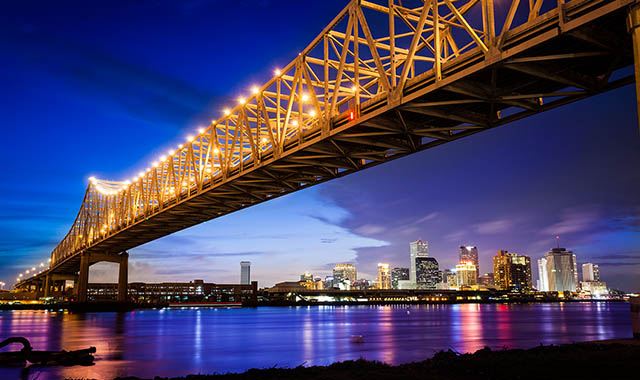Sediments Conference Asks Key Questions

What’s working? What needs to be fixed? What’s next? All good questions, especially when you’re talking about the health of our waterways.
Those questions were prevalent during the Tenth International Conference on Remediation and Management of Contaminated Sediments, where participants shared research results and opportunities associated with investigating, remediating and restoring the environmental and economic vitality of waterways.
-png.png?sfvrsn=4f515b0e_0) Managing these aquatic systems requires complex actions that affect a diverse group of international stakeholders and touch a wide range of environmental, economic, political and social issues. The 2019 Sediments Conference, held in February and organized and presented by Battelle, provided a forum to bring this diverse group together.
Managing these aquatic systems requires complex actions that affect a diverse group of international stakeholders and touch a wide range of environmental, economic, political and social issues. The 2019 Sediments Conference, held in February and organized and presented by Battelle, provided a forum to bring this diverse group together.
The five technical tracks featured during the conference ranged from Remediation and Restoration Alternatives to Management Approaches and Policy.
And while there were many concepts covered during the conference, one focus area that has gotten much attention in the media lately is per- and polyfluoroalkyl substances (PFAS). This year’s conference featured two short courses, nine platform sessions and eight posters all specific to PFAS. Topics covered ranged from the fate and transport of PFAS in surface waters to in situ remedies for PFAS contaminations.
The 2019 Sediments Conference concluded with a roundtable discussion focused specifically on the three big sediment management questions: What’s working, what needs to be fixed and what’s next? Here are some of the highlights from those discussions.
Remedy and Restoration Implementation
What’s working?
Dredging as an effective remedy, habitat restoration as a key component of a remedial action, application of amendments such as activated carbon to increase effectiveness of capping, increased acceptance and use of confined disposal facilities (CDF), continued success of the Great Lakes Legacy Act (GLLA) to remediate and restore contaminated sediment sites, residuals management, refinement of the approach to calculating and applying surface weighted area concentrations (SWAC) to remedial decision making, the use of drones for site characterization and monitoring.
What needs to be fixed?
More thorough pre-design characterization, restrictions on dredging and remediation because of environmental windows, complex containment and monitoring approaches, the use of decision trees for making complex decisions
What’s next?
Combined remedies (e.g., habitat caps), valuation of secondary benefits including economic revitalization, new techniques for in situ stabilization (ISS), development and regulatory concurrence of more realistic urban waterway cleanup goals
Remediation and Restoration Alternatives
What’s working?
Great headway with GLLA and smaller sites, advances in sediment stabilization and great advances in measuring and controlling ebullition
What needs to be fixed?
Seems we have more willingness for some remediation projects to take chances on making headway with remediation versus certainty.
What’s next?
Better (earlier) stakeholder engagement during development of the Feasibility Study and stakeholder inclusion during remedy decision-making, and increase in the application of beneficial use of dredged sediment to support long term, sustainable objectives (e.g. coastal resilience, urban renewal etc.).
Management Approaches and Policy
What’s working?
The Great Lakes Legacy Act (GLLA) is working.
What needs to be fixed?
Widening geographic disparity in cleanup policy and approaches, more publications and information exchange are needed. Are we truly able to finance large scale projects (mega-mega-sites)?
What’s next?
Early adaptive management (AM) successes. We need to make AM real and improve approaches.
Environmental Processes and Modeling
What’s working?
Multiple lines of evidence approaches and better understanding of bioavailability are increasing the effectiveness and focus of sediment remediation projects.
What needs to be fixed?
Better understanding of sediment-fish exposures/risk and defining “background.”
What’s next?
New methods/tools for collecting data to characterize environmental processes, predicting/assessing climate change impacts, more long-term monitoring data.
Characterization, Assessment, and Monitoring
What’s working?
Passive sampling is coming of age, many applications and success stories. Extending passive sampling to a wider range of pollutants – munitions, mercury. Novel characterization methods – PCB sniffing dogs. Characterization of ongoing sources.
What needs to be fixed?
Remaining technical issues of passive sampling implementation challenges including regulatory acceptance, data management and communication to a larger audience.
What’s next?
Integration of passive sampling results with risk assessment and tracking fish movement, site fidelity – how do we use such information?
Where to Find Us Next: 2019 Bioremediation Symposium
The Fifth International Symposium on Bioremediation and Sustainable Environmental Technologies will be held April 15-18 in Baltimore, Maryland. The Bioremediation Symposium is a forum for sharing research results, practical experiences and opportunities associated with advances in bioremediation and green and sustainable practices in remediation. Several sessions will focus on treatment technologies for emerging contaminants, including PFAS.
BATTELLE UPDATES
Receive updates from Battelle for an all-access pass to the incredible work of Battelle researchers.